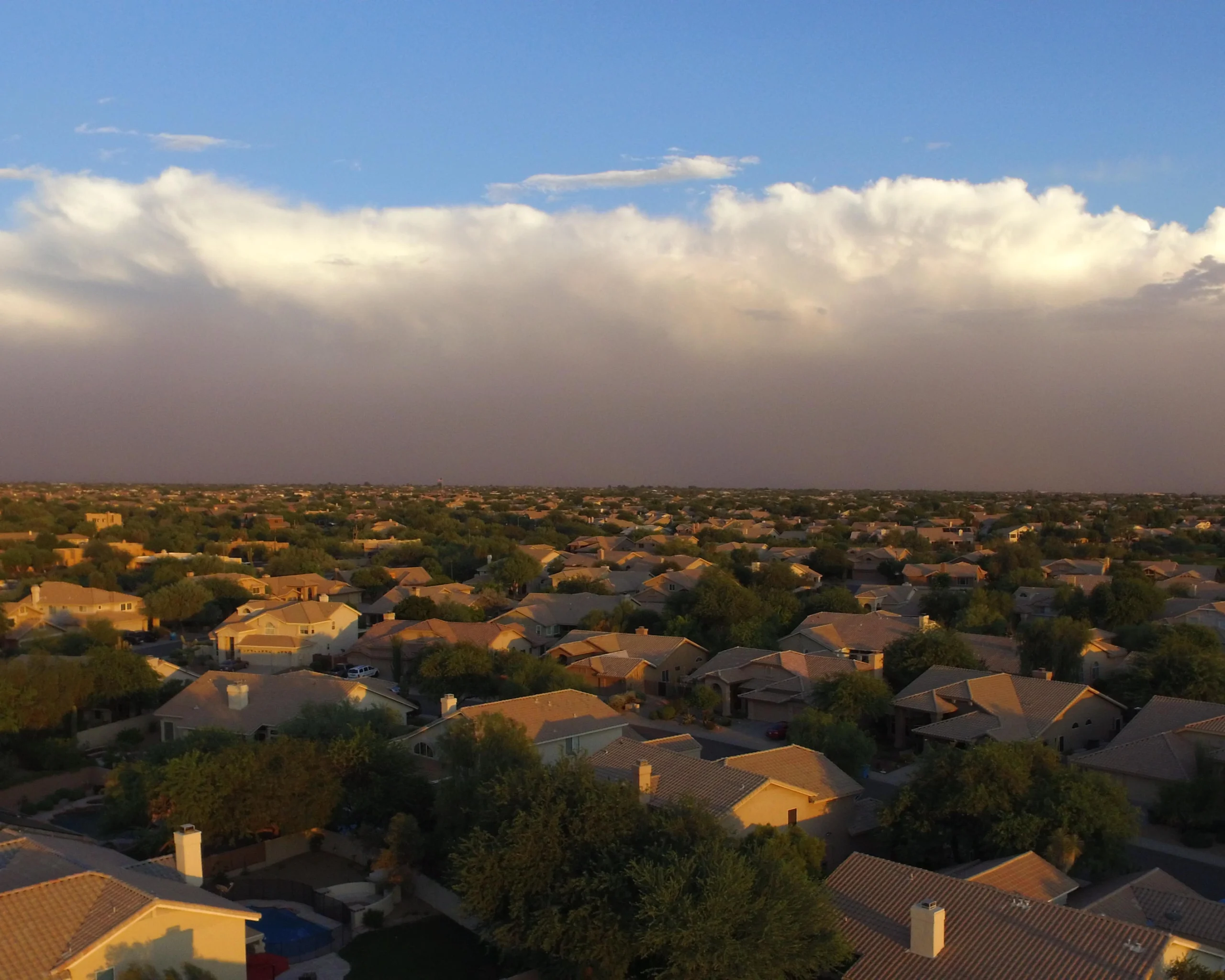Ah, the good old days when we dodged dust devils and braved the treacherous winds during monsoon season while driving from Phoenix to Tucson. Those were simpler times; and those whimsical little tornadoes of dirt and debris, that we called dust devils, always seemed to pop up out of nowhere and fill your car with grit. Along the way, I have joined the rest of our community and added a new word to my vocabulary.
A haboob is a dust storm. This word refers to those big, blasting winds that we often experience during dust storms. But there’s a reason they are now called haboobs. In the early 1970s there were some Arizona meteorologists, and others, who did a paper about our dust storms, which they submitted to the American Meteorological Society. The Society was studying Arizona’s dust storms, or specifically haboobs, and they determined that our dust storms were very much related to the ones that were happening in Sudan. They called those haboobs and chose to use the same name for Arizona’s big, blasting winds. Subsequently, the term “haboob” came into popular use after the New York Times ran an item on June 11, 2011 reporting a magnificent haboob in Arizona.
A haboob is caused by downward and outward moving winds from a thunderstorm. It is characterized by a distinct wall of dust. And, of course, we have plenty of dust and loose soil in the desert. So, all haboobs are dust storms, but not all dust storms are haboobs.
Until recently, I used to think haboobs and monsoons were the same thing. However, I have learned that there is a difference. A monsoon refers to the season characterized by a change in our overall wind pattern. It also marks the beginning of the time when we typically receive some moisture. That’s what allows us to have those welcome afternoon summer thunderstorms – for the most part. I certainly look forward to those rare days when the sky will open for a few minutes and drop some water on me – and my roses. The monsoon is just the season.
Caring For Your Roses
About your roses. There isn’t really is much extra that you need to do to protect your plants from a haboob or the monsoon season. If you’re following the guidelines provided by the certified Consulting Rosarians in your rose community, then you’re probably doing what needs to be done to protect your plants during the monsoon season and its accompanying haboobs.
With the new growth which occurred during the spring, the interior of the plant will become crowded. To increase air circulation, consider removing some of the inward growth. Allowing the wind to blow through your plants will help reduce stress on the rose bush. Think about which plants you want to nurture at the end of the year and remove the others. If you have container plants, you can move them to a protected area to minimize damage from wind and dust.
If you want to protect your beloved roses from wind damage, try staking some of the flexible stems. Just tie them loosely to supports so they can still wiggle a bit, but won’t snap off or topple over.
You should be giving your plants a good wash each week to keep those pesky mites and thrips under control. Plus, it’ll help get rid of any dust and stray spores that might have settled on the leaves.
Apply a layer of mulch like wood chips or straw around your plants. Mulch is awesome because it keeps the soil nice and moist, stops erosion, and keeps pesky weeds from popping up. Plus, it’s like a protective shield when the rain gets heavy.
Water! Make sure your roses have adequate water. Our temperatures are going to stress the rose plants, so we need to mitigate that by keeping our roses moist. In-ground roses will most likely need to be watered 3 to 4 times a week. Established roses, that are being grown in a large container will need to be watered daily. New roses that you have in smaller containers may need to be watered twice each day. If you don’t do it, the heat will totally dry out the pots. Oh, and if you’re going on a long trip, it’s a good idea to set up some drip tubing, emitters, and a timer for your yard. Make sure to test your timers before you leave. Nobody wants to come back home to dead batteries or dead roses.
Monsoon season is upon us. It’s time of rain (eventually), thunderstorms (most assuredly), and those delightful haboobs that sweep through Arizona with all the grace of a bull in a china shop. While we may be smart enough to weather the storm, let’s not forget about our roses. These dazzlers need some extra care during this thunderous time. So, put on your gardening gloves and make sure your roses are well-protected during the monsoon season!

